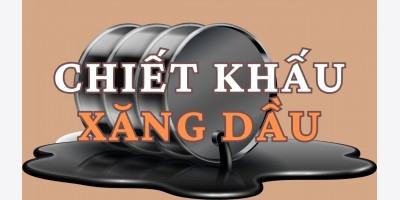Giá dầu thô hạ nhiệt vá» dÆ°á»›i 100 USD/thùng
Äúng nhÆ° dá»± Ä‘oán, giá dầu thô Ä‘ã vượt mức 100 USD/thùng đầu phiên châu Âu hôm qua do vẫn còn Ä‘ó sá»± quan ngại vá» tình hình bất ổn xã há»™i và chính trị ở bắc Phi và Trung Äông sẽ làm giảm nguồn cung dầu thô trên thị trÆ°á»ng thế giá»›i, tuy nhiên sau khi chạm lên mức 103 USD/thùng thì bắt đầu giảm trở lại từ Ä‘ó cho đến khi kết thúc phiên Mỹ trÆ°á»›c những lá»i cam kết từ Ả Ráºp Saudi và CÆ¡ quan năng lượng quốc tế IEA sẽ bù đắp lượng thiếu hụt nếu nhÆ° nguồn cung tại Libya bị gián Ä‘oạn.
Ả ráºp Saudi và IEA quả quyết rằng há» sẽ Ä‘áp ứng đủ nguồn năng lượng cho thị trÆ°á»ng bằng cách bù đắp vào những nÆ¡i bị thiếu hụt, Mark Pervan, ngÆ°á»i đứng đầu ban nghiên cứu của Australia & New Zealand Banking Group Ltd ở Australia & New Zealand Banking Group Ltd nói. Vì váºy, tâm Ä‘iểm của thị trÆ°á»ng thế giá»›i hiện nay chủ yếu táºp trung vào những bất ổn ở Trung Äông hÆ¡n là những thông tin kinh tế của Mỹ, chẳng hạn nhÆ° số ngÆ°á»i khai báo thất nghiệp tuần Ä‘á»u giảm.
Giá dầu thô WTI giao kỳ hạn tháng 04 vào lúc 07h22 sáng nay (giá» Việt Nam) giảm 67 cent, tÆ°Æ¡ng Ä‘Æ°Æ¡ng mức giảm 0,7% xuống mức 96,61 USD/thùng. Kết thúc phiên Mỹ tối qua, giá dầu Ä‘óng cá»a ở mức 97,28 USD/thùng, giảm 82 cent so so vá»›i phiên Ä‘óng cá»a liá»n trÆ°á»›c.
Trong khi giá dầu thô Brent giao kỳ hạn tháng 04 tại London lại tăng 11 cent lên mức 111,36 USD/thùng vào cuối phiên hôm qua, mức cap nhất kể từ ngày 29/08/2008.
Oil Drops a Second Day After Saudi, U.S. Assurances on Supplies
By Ben Sharples
Feb. 25 (Bloomberg) -- Oil dropped for a second day in New York after the U.S., Saudi Arabia and the International Energy Agency said that they can compensate for any disruption to Libyan shipments.
New York futures retreated from $103.41 yesterday, the highest in 29 months after President Barack Obama said the U.S. will be able to “ride out” a cut resulting from turmoil in Libya. The crisis has trimmed supply by 500,000 to 750,000 barrels a day, according to the IEA. U.S. crude stockpiles rose less-than-forecast last week, while fewer Americans than projected filed first-time claims to collect jobless benefits.
“Saudi Arabia and the IEA assured they would be able to release crude into the market to make up for shortfall,” Mark Pervan, head of commodity research at Australia & New Zealand Banking Group Ltd. in Melbourne, said in an e-mailed note today. “With all the focus on Middle East oil supply, the slightly better U.S. crude inventory data and falling jobless claims was largely ignored.”
Crude for April delivery lost as much as 67 cents, or 0.7 percent, to $96.61 a barrel in electronic trading on the New York Mercantile Exchange, and was at $97.16 at 10:22 a.m. Sydney time. Yesterday, it fell 82 cents to $97.28 after climbing to $103.41, the highest intraday price since Sept. 29, 2008.
Prices are up 12.4 percent for the week, the biggest gain since the week ended Feb. 27, 2009. Futures are 24 percent higher than a year ago.
IEA Offer
Brent oil for April settlement rose 11 cents to $111.36 a barrel on the London-based ICE Futures Europe exchange yesterday, the highest close since Aug. 29, 2008.
The IEA said that it is ready to release emergency stockpiles, if needed. The Paris-based agency, founded in 1974 in response to the Arab oil embargo, advises 28 developed nations, including the U.S., Japan and Germany.
Saudi Arabia and other members of the Organization of Petroleum Exporting Countries said they won’t wait for an emergency meeting of the group to increase output, according to a person with knowledge of producer-nation policy. Any extra supply would be conditional on requests for more crude.
Libya, which pumps 1.6 million barrels of oil a day, is the ninth-largest producer among the 12 members of OPEC, shipping most of its crude and fuels across the Mediterranean to Europe. The country has the largest reserves in Africa.
Regional Unrest
Opponents of Libyan leader Muammar Qaddafi consolidated control over the oil-rich east while he clamped down on Tripoli, using tanks to block highways and security forces to attack residents, witnesses said. Foreign governments stepped up efforts to extract their citizens from what fleeing Egyptians said is turning into a bloodbath.
Libya is the latest nation to be rocked by protests ignited by the ouster of Tunisia’s president last month and fanned by the Feb. 11 fall of Egyptian President Hosni Mubarak. Unrest has spread to Iran, Bahrain, Yemen and Algeria.
Total SA and OMV AG became the latest energy producers to scale back Libyan operations, following Eni SpA, RWE AG and BASF SE’s Wintershall unit. China National Petroleum Corp. said it relocated 47 of its Libyan-based workers.
Countries in North Africa and the Middle East were responsible for 36 percent of global oil output and held 61 percent of proved reserves in 2009, according to BP Plc, which publishes its Statistical Review of World Energy each June.
U.S. Crude Stockpiles
U.S. crude supplies climbed by 822,000 barrels to 346.7 million last week, a sixth straight increase, a weekly Energy Department report showed. A 1.1 million-barrel gain was projected, according to the median estimate of 15 analysts surveyed by Bloomberg News.
Gasoline inventories tumbled 2.8 million barrels to 238.3 million in the week ended Feb. 18, the first drop this year, the department said. Analysts forecast that stockpiles advanced 850,000 barrels last week.
Applications for unemployment insurance decreased 22,000 to 391,000 in the week ended Feb. 19, the Labor Department said yesterday. Claims have fallen in three of the past four weeks, pushing down the monthly average to the lowest level since July 2008. The Bloomberg Consumer Comfort Index rose to the highest since April 2008, reflecting an improving jobs picture.









